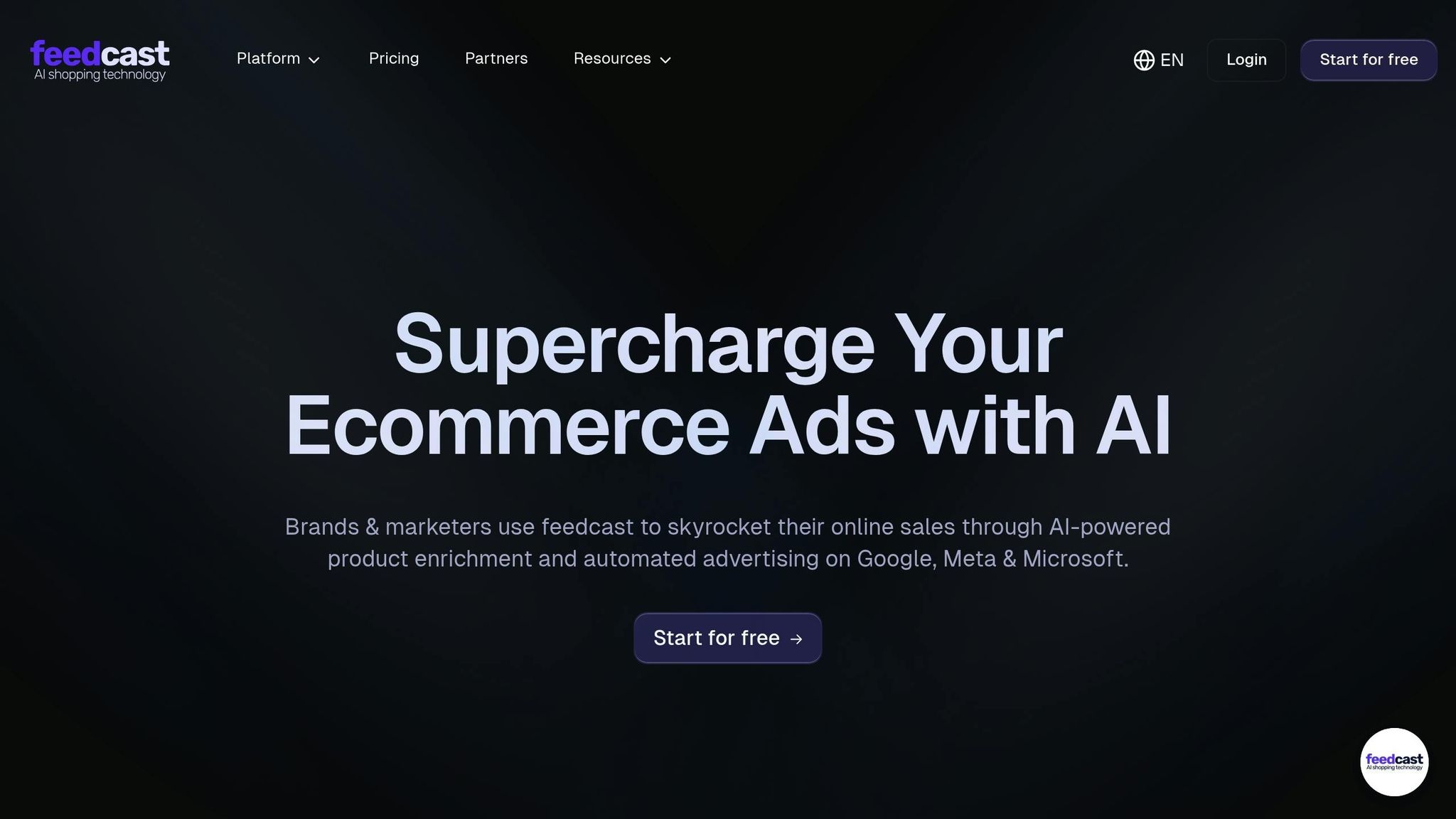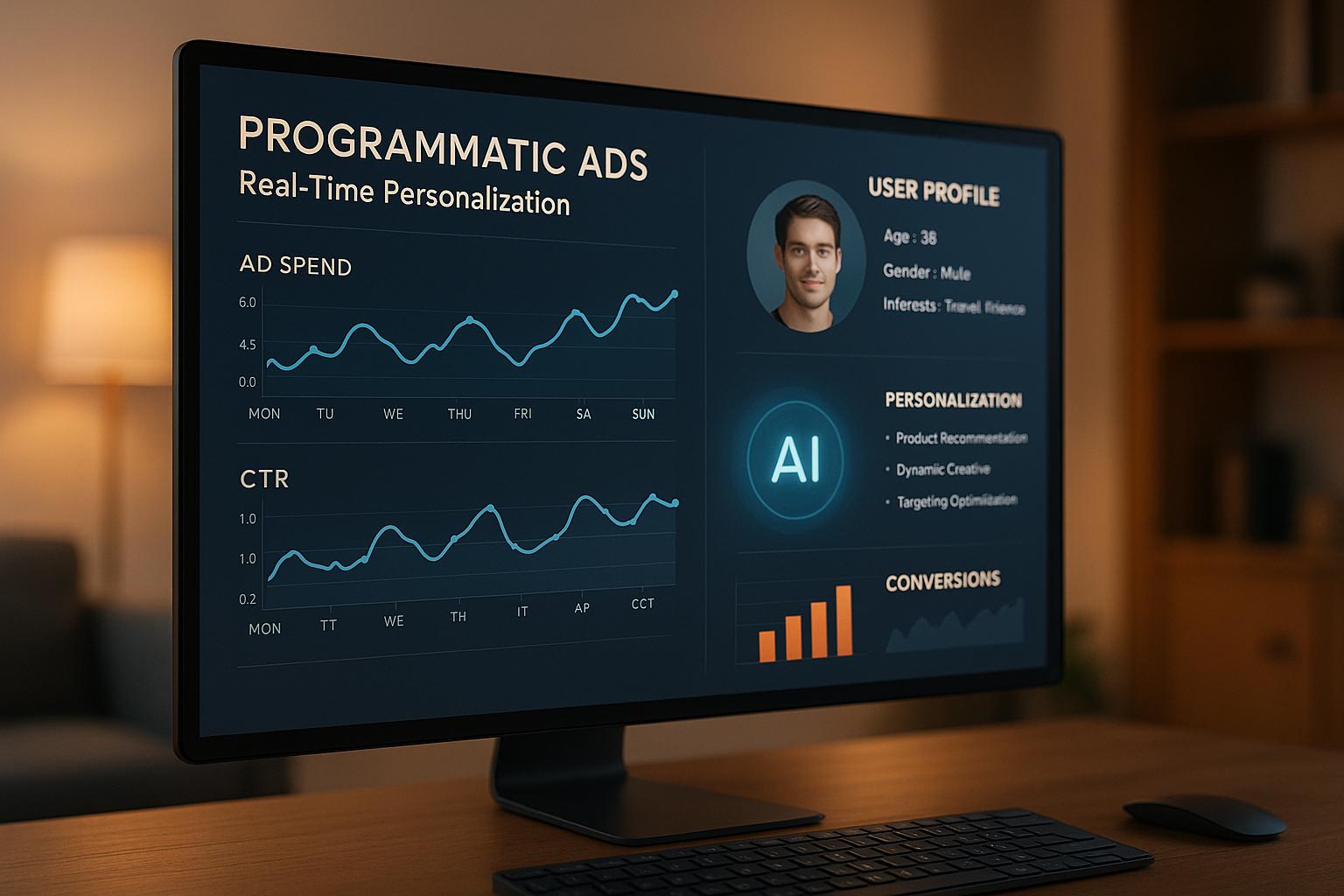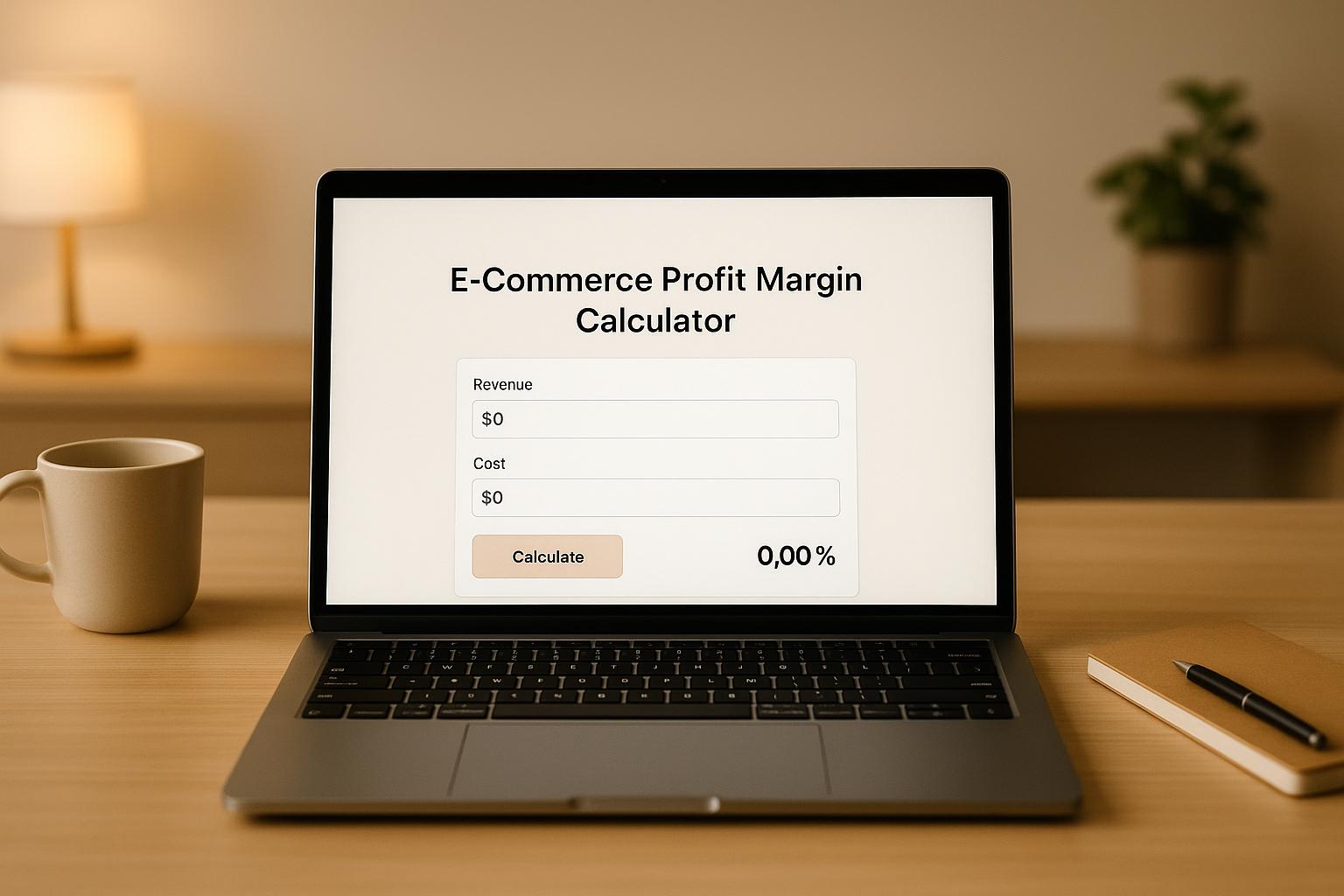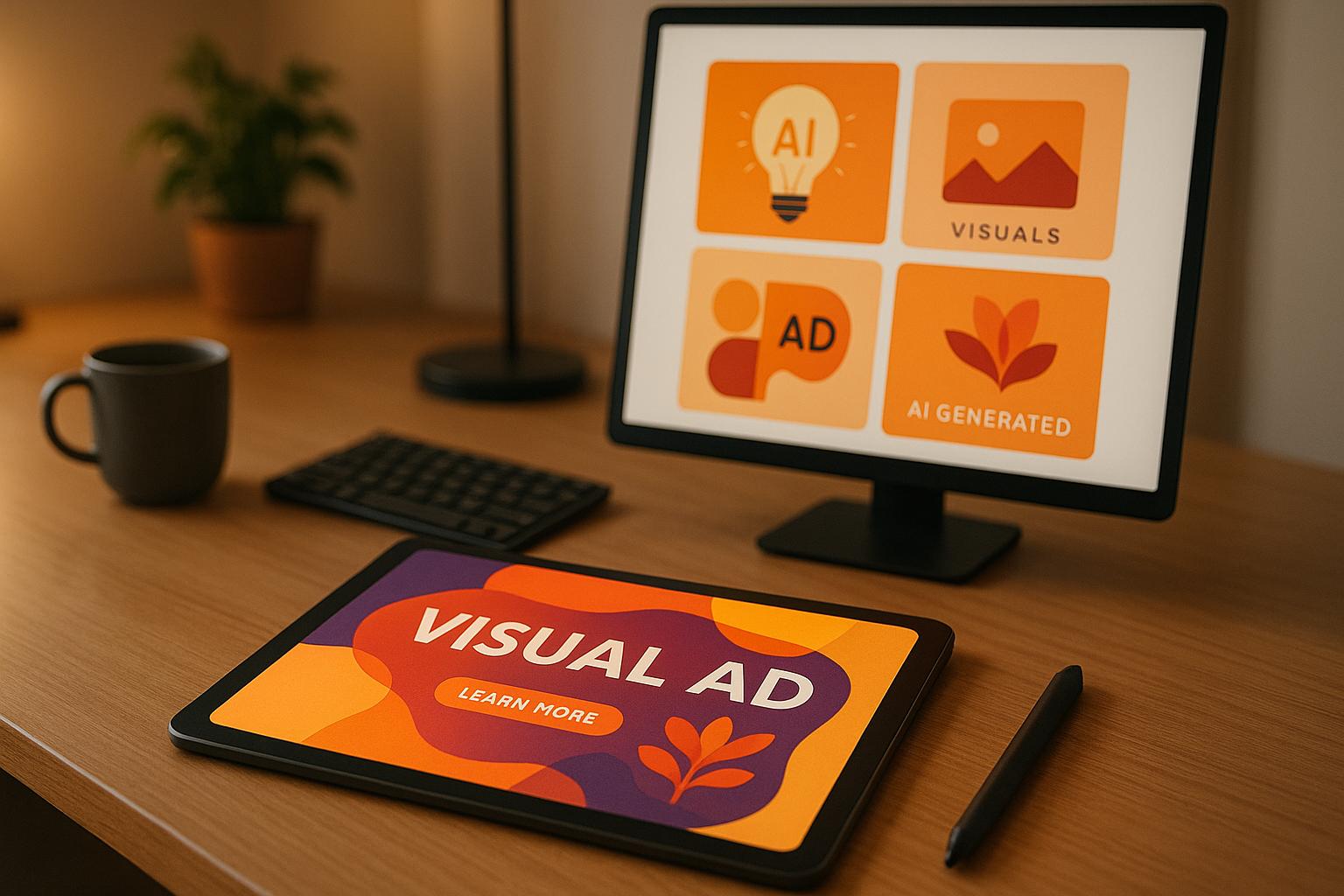AI vs. Manual CTA Optimization
When deciding between AI and manual methods for optimizing CTAs (Call-to-Actions), it boils down to speed, personalization, and resources. AI offers faster, data-driven results, often increasing conversion rates by 20–25%. Manual methods give more control over messaging but require more time and effort, typically boosting conversions by around 10%.
Here’s a quick breakdown:
- AI: Best for large-scale campaigns, real-time adjustments, and data-heavy personalization.
- Manual: Ideal for niche audiences, brand-specific messaging, and industries needing precise compliance.
Many businesses combine both for efficiency and control, leveraging tools like Feedcast.ai for automation while maintaining oversight.
Key Takeaway: Use AI for scalability and precision. Opt for manual if creativity and brand alignment are priorities. A hybrid approach balances both.
CTA Optimizer Tutorial
How AI-Powered CTA Optimization Works
AI-powered CTA (Call-to-Action) optimization takes the guesswork out of crafting CTAs by using real-time, data-driven personalization. Instead of relying on intuition or basic A/B testing, these systems continuously learn from every interaction to improve performance. This shift to automation allows businesses to refine their strategies with precision.
AI CTA Optimization Process
The backbone of AI-powered CTA optimization lies in detailed data analysis and segmentation. By analyzing factors like age, gender, interests, spending habits, and behavior across multiple touchpoints, AI systems create detailed customer profiles [1]. Many of these systems connect with leading Customer Data Platforms (CDPs) to access robust customer insights [1].
Technologies such as machine learning, natural language processing, collaborative filtering, and deep learning work together to deliver real-time, personalized CTAs [2]. Predictive analytics further enhance this process by forecasting customer interests, potential churn, and behaviors, enabling brands to proactively tailor suggestions and experiences. Adaptive algorithms instantly adjust content based on user demographics, browsing activity, and timing [2].
For example, BSH Group, a global leader in home appliances, partnered with Medallia to integrate AI-powered personalization across 40 multichannel touchpoints. These included websites, email campaigns, in-store interactions, and CRM systems. By identifying drop-off points and calculating real-time engagement scores, they achieved a 106% increase in overall conversion rates and a 22% boost in add-to-cart conversions [3].
Dynamic content generation plays a key role by creating variations of subject lines, body copy, and CTAs tailored to specific platforms like Google and Meta. Some tools, such as Custom Image Studio, even generate personalized ad creatives that align with brand aesthetics [1].
Benefits of AI-Powered CTA Optimization
The advantages of AI-driven CTA optimization are clear. It enables instant scalability of personalization, with view-to-submission rates climbing as much as 42% higher. This has proven particularly effective in influencing purchase decisions among Gen Z and millennial shoppers in the US [1][2].
AI also accelerates testing and optimization, giving businesses a competitive edge. For instance, The New York Times uses AI to analyze hundreds of visitor signals - like reading history, topic preferences, and time of day - to deliver personalized homepage experiences. This approach has led to higher engagement and conversion rates [2].
Improved targeting precision allows marketing teams to focus on strategy rather than manual adjustments. With AI processing vast amounts of behavioral data, 82% of consumers report that personalized experiences influence their brand choices in at least half of their shopping decisions [3].
MandM Direct, a UK-based retailer, implemented AI-driven post-purchase recommendations, which increased overall revenue by 2.4% and boosted recommendation click-through rates by 11.4% [2]. Additionally, content explainability tools provide percentage scores to show how well content aligns with target audiences and brand guidelines, offering one-click suggestions for improvement [1].
Platforms like Feedcast.ai bring all these capabilities together by centralizing AI-powered CTA management across channels. These systems integrate with major advertising platforms, such as Google, Meta, and Microsoft Ads, to automatically optimize CTAs while maintaining brand consistency and enhancing campaign performance.
Manual CTA Optimization Explained
Manual CTA optimization taps into human creativity and expertise to design calls-to-action (CTAs) that resonate with customer psychology while staying true to a brand's identity.
Manual CTA Optimization Process
The process begins with defining clear goals and understanding what motivates the target audience. Marketers then craft a handful of CTA variations, testing them through A/B experiments over several weeks. Both quantitative metrics and qualitative user feedback are analyzed to uncover preferences and patterns.
This cycle of refinement continues, with teams applying insights from each round to create better-performing CTAs. Successful strategies are documented, and lessons learned help avoid repeating past mistakes, ensuring steady improvement over time.
Manual CTA Optimization: Pros and Cons
Manual optimization offers the advantage of creating CTAs that feel personalized and deeply aligned with a brand's voice. This approach helps build emotional connections with customers, fostering trust and loyalty. For businesses where trust and compliance are critical, such as in healthcare or finance, the human touch is invaluable.
Another strength is adaptability. Unlike automated systems, human marketers can quickly adjust CTAs to respond to sudden market shifts, seasonal trends, or unexpected events. This flexibility allows brands to stay relevant and responsive in dynamic environments.
However, manual optimization has its drawbacks. It’s a time-consuming process that requires skilled professionals and extended testing periods, making it less suited for campaigns that demand quick execution. Additionally, manual methods often achieve a 70–80% accuracy in predicting user behavior and typically result in a 10% boost in conversion rates. While these numbers are respectable, they fall short of the 90%+ accuracy and 25% improvements often seen with AI-driven approaches [4].
Subjective biases can also influence decisions, sometimes prioritizing creative instincts over data-backed results. Lastly, scalability is a challenge, as manual methods struggle to efficiently optimize a large number of CTAs across multiple channels [4].
sbb-itb-0bd1697
AI vs Manual CTA Optimization: Side-by-Side Comparison
Building on the earlier discussion of optimization methods, let’s dive into a direct comparison to help you decide which approach best suits your business needs. Understanding the distinctions between AI-driven and manual CTA optimization is key to shaping effective advertising strategies. Each method has unique strengths that influence campaign results, resource use, and overall marketing impact.
AI vs Manual: Comparison Table
Here’s a breakdown of how AI and manual optimization stack up across key performance factors:
| Performance Factor | AI Optimization | Manual Optimization |
|---|---|---|
| Speed | Hours to days | Days to weeks |
| Scalability | Handles complex campaigns easily | Best for smaller campaigns |
| Personalization | Real-time, data-driven | Limited, requires manual segmentation |
| Resource Requirements | Initial setup, minimal ongoing effort | High, requires continuous input |
| Creativity | Data-focused, less nuanced | High creative flexibility |
| Accuracy | 90%+ in behavior prediction | 70–80% |
| Time-to-Results | 6–8 weeks | 12–16 weeks |
| Real-Time Adjustments | Yes | No, relies on periodic updates |
| Conversion Rate Uplift | 20–25% average | Around 10% average |
| ROAS Improvement | Up to 83% in a week | No consistent benchmarks |
AI optimization stands out for its speed, scalability, and precision, while manual methods excel in creative control and adaptability to niche needs.
AI systems are particularly adept at analyzing large volumes of user data to craft highly personalized CTAs, adjusting dynamically based on browsing habits, purchase history, and engagement trends. This level of personalization is hard to replicate manually, especially for large-scale campaigns [7, 11, 13].
When to Use AI vs Manual Optimization
AI-powered optimization is ideal for high-volume e-commerce campaigns where speed and data-driven personalization are critical. Large retailers managing multiple product categories across various platforms often benefit from AI's ability to handle complex testing scenarios simultaneously. According to HubSpot, AI-driven personalized CTAs can outperform generic ones by up to 202% [5]. Businesses using AI frequently report conversion rate improvements of 20–25% and ROAS boosts of up to 83% within just a week for large-scale efforts [9, 14, 15].
On the other hand, manual optimization works well for campaigns targeting niche audiences, where creative input and brand voice consistency are non-negotiable. Small businesses with focused product offerings or specialized markets often find manual methods more practical. Industries like healthcare or finance, where compliance and messaging precision are crucial, also benefit from the hands-on approach [6].
In short, AI is the go-to for high-volume, complex campaigns, while manual methods shine in niche markets requiring creativity and precision.
For those seeking a hybrid solution, platforms like Feedcast.ai offer a compelling example. Feedcast.ai automates multi-channel e-commerce advertising, optimizing CTA performance across platforms like Google, Meta, and Microsoft Ads. By minimizing manual effort, it delivers improved ROI and streamlined campaign management.
The choice between AI and manual optimization ultimately hinges on your campaign scale, available resources, and specific business goals. Both methods have their place, and the right approach depends on what you aim to achieve.
Choosing the Right CTA Optimization Method
Selecting the best method for optimizing your CTAs hinges on factors like your business size, available resources, and specific goals. Different approaches yield varying results, so aligning your choice with your e-commerce campaign needs is key.
Decision-Making Factors
Business Size and Scale
Smaller businesses with limited product catalogs might find manual CTA optimization manageable. However, as operations expand and product lines grow, manual management can become overwhelming. At that point, AI-driven solutions often become the better option for handling the increased complexity and scaling effectively [10].
Budget Considerations
While AI requires an upfront investment, it can deliver long-term savings and efficiency [8]. Manual methods may seem cheaper initially, but they often result in hidden costs due to errors and delays [10]. For larger e-commerce operations, investing in AI and IT infrastructure can drive notable cost reductions and fuel sales growth [16].
Available Expertise and Resources
AI optimization thrives on clean, connected data and seamless integration with tools like CRMs, ERPs, and marketing platforms. Partnering with experienced AI providers can simplify this process [8]. On the other hand, manual optimization requires significant time and effort, leaving more room for human error [11]. If internal expertise is limited, AI tools that automate and personalize tasks can be a game-changer [15].
Campaign Complexity
For straightforward, low-stakes campaigns, manual CTAs might suffice. However, when dealing with complex sales involving multiple decision-makers or high-value transactions, AI's ability to deliver dynamic, personalized content becomes essential [14].
Data Quality and Availability
AI systems rely heavily on clean, well-organized data. To perform effectively, they need accurate and up-to-date information on customer behavior, purchases, inventory, and reviews [8][12]. Poor-quality data can hinder AI performance, so ensuring data accuracy is a critical first step [8][12].
Speed Requirements
In the fast-moving world of e-commerce, quick responses to shifting trends, competitor pricing, and inventory changes are crucial [10]. Traditional methods often struggle to keep up, potentially missing key opportunities [8][10]. AI, however, analyzes behavior in real time, enabling it to craft dynamic offers and respond to market changes instantly [8][9][11].
"Traditional simply isn't fast enough to keep pace with your customers' evolving behaviors or your competitors."
– Convertcart [13]
Integration Capabilities
For AI systems to perform at their best, they need to integrate seamlessly with your existing tools, like CRMs and ERPs. A well-integrated solution not only boosts productivity but also helps manage costs more effectively [8][12]. For many businesses, a hybrid approach - blending manual oversight with AI automation - can strike the right balance.
How Feedcast.ai Helps with CTA Optimization

Feedcast.ai is designed to address these factors, offering a blend of AI-driven automation and strategic human oversight tailored for U.S.-based e-commerce businesses.
- Centralize Multi-Channel Management: Streamline optimization across platforms like Google, Meta, and Microsoft Ads using a single dashboard. This reduces manual effort while delivering AI-powered insights.
- Automate Product Data Enrichment: Automatically improve product titles, descriptions, and attributes to ensure your CTAs are backed by compelling, accurate product information.
- Scale with Flexible Pricing: With plans starting at a free tier and scaling up (e.g., the Autopilot plan at $99/month for up to 1,000 products), Feedcast.ai makes AI optimization accessible to businesses of all sizes.
- Deploy Smart Campaign Automation: Launch and optimize shopping campaigns with automated targeting adjustments and personalized ad copy, while retaining the ability to oversee and adjust strategies.
- Access Performance Analytics Integration: Gain real-time metrics, custom reporting, and performance segmentation to refine your CTA strategies effectively.
- Leverage Google CSS Partnership Benefits: As a certified Google CSS partner, Feedcast.ai can help reduce costs for Google Shopping campaigns, addressing ROI concerns that often drive the choice between AI and manual methods.
By combining automation with human insight, Feedcast.ai bridges the gap between manual control and full automation. This hybrid approach allows businesses to benefit from AI's efficiency while maintaining the flexibility to adapt strategies as needed.
"AI offers the missing piece; not by replacing human insight, but by amplifying it."
– Rajeev Sharma, Co-Founder and CEO, Markovate [8]
Conclusion
Effective CTA optimization hinges on aligning your approach with your specific business needs. For businesses aiming to scale, AI-powered optimization offers clear advantages. Research shows it can boost conversion rates by 20–25%, compared to the 10% improvement typically seen with traditional methods. It also reduces cart abandonment rates by 20% and delivers results in just 6–8 weeks, compared to the 12–16 weeks required for manual approaches[7][4].
That said, manual optimization still has its place. It's particularly useful for smaller operations or campaigns that require a high level of creative control. While AI excels at processing massive datasets across multiple channels in real time, manual methods shine when brand voice and messaging need to take center stage.
Many successful e-commerce businesses opt for a hybrid approach, blending the strengths of both AI and manual strategies. This allows them to leverage AI's 90%+ accuracy in predicting user behavior[4], while retaining the creative oversight that manual methods provide.
For U.S. e-commerce businesses seeking a practical way to balance these approaches, Feedcast.ai offers a compelling solution. It automates product data enrichment and delivers AI-driven insights across platforms like Google, Meta, and Microsoft Ads. With plans ranging from a free tier to options for unlimited products, Feedcast.ai makes advanced CTA optimization accessible to businesses of all sizes.
FAQs
Why does AI-driven CTA optimization deliver better conversion rates than manual methods?
AI-powered tools for optimizing CTAs (calls-to-action) take the guesswork out of the process by automating tasks like testing, personalization, and real-time updates. Where manual methods can be slow and prone to inaccuracies, AI steps in to continuously assess user behavior, carry out A/B tests, and fine-tune CTAs to align with audience preferences almost instantly.
This flexible and fast-paced approach helps businesses connect with users more effectively, react quickly to emerging trends, and craft CTAs that truly resonate. The result? Higher conversion rates, stronger engagement, and better performance across campaigns.
What challenges might arise when incorporating AI-driven CTA optimization into a marketing strategy?
Integrating AI-driven CTA optimization into your marketing efforts can come with its share of hurdles. One major challenge is ensuring reliable, high-quality data and smooth data integration. AI systems thrive on accurate and diverse datasets, so if your data management falls short, the results might not meet your expectations.
Another obstacle is the technical know-how needed to set up and manage AI tools effectively. For many businesses, this means investing in employee training or bringing in specialists to make the most of the technology. On top of that, privacy and security concerns are a big deal. Since AI systems handle large volumes of sensitive customer data, protecting that information is key to maintaining trust.
Addressing these challenges requires thoughtful planning, allocating the right resources, and having a solid strategy in place to ensure a smooth and successful implementation.
When is it better to use a mix of AI and manual methods for optimizing CTAs?
A hybrid approach is most effective when blending AI-driven insights with human expertise results in stronger outcomes. Take marketing campaigns, for instance - AI can manage real-time data analysis and automation, while humans bring creative judgment to fine-tune messaging that aligns with a brand’s voice or resonates with specific audiences.
This approach shines in complex marketing strategies where both efficiency and personalization are crucial. AI offers speed and scalability, but it’s the human touch that ensures thoughtful, nuanced decisions. Together, they create an optimization process that neither AI nor manual efforts could achieve on their own.
Yohann B.




